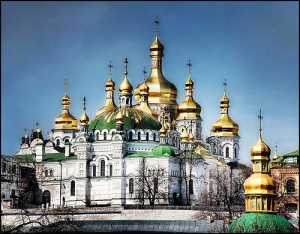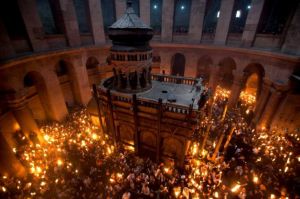 |
| The Kyiv-Pechersk Lavra (Kiev Cave Monastery) in Ukraine |
The Kyiv-Pechersk Lavra (Kiev Cave Monastery) was built by
Kiev monks back in 1051, this
striking building is the most holy place in the
Ukraine. In 1051, Saint Anthony took up residence in one of the
caves on this hilly outcrop. Over the centuries the
Monastery took on increasing significance as a religious centre until it was considered
Orthodox Christianity's equivalent of
Rome or Jerusalem.
The Lavra (head monastery in Greek) is one of
Byzantium's holiest sites, where Orthodox monks established their young religion until
Batu Khan invaded and
burned Kiev in 1274. Still magnificent with its
onion-shaped spires and
gold ornamentation, the
Lavra is a visit to
Ukraine's glorious past. It is still an active place of
Orthodox worship.
The caves
on the property serve as burial grounds for monks. There are a complex
system of underground tunnels 2 to 2.5 meters high and up to 1.5 meters
wide. The tunnels accessible to visitors in the
Short Caves are 228 m long, in the
long Caves, 293 m long.
 |
| The Kyiv-Pechersk Lavra (Interior) |
There are three
underground churches in each of the labyrinths. There are the
main church and monastery areas, but there are also other
museums within the compound, such as the
microscopic museum with
carvings of Shevshenko
on the head of a pin. Underground is where the mummified monks are. The
walls and towers of the monastery remaining today, date from 1698-1701.
The Great
Lavra Bell tower, 96.5 metres high, (1731-1745) looms over Kyiv proudly. Kyiv’s then-highest structure was built according to plans by
architect Johann G. Schädel from 1731 to 1744. In 1926,
Lavra was converted into a
state history and culture museum, and
masses stopped being celebrated. Since 1990, the
Kyiv-Pechersk Lavra is a
UNESCO World Heritage Site, and in 1996 the reserve was decreed a
national monument.


No comments:
Post a Comment